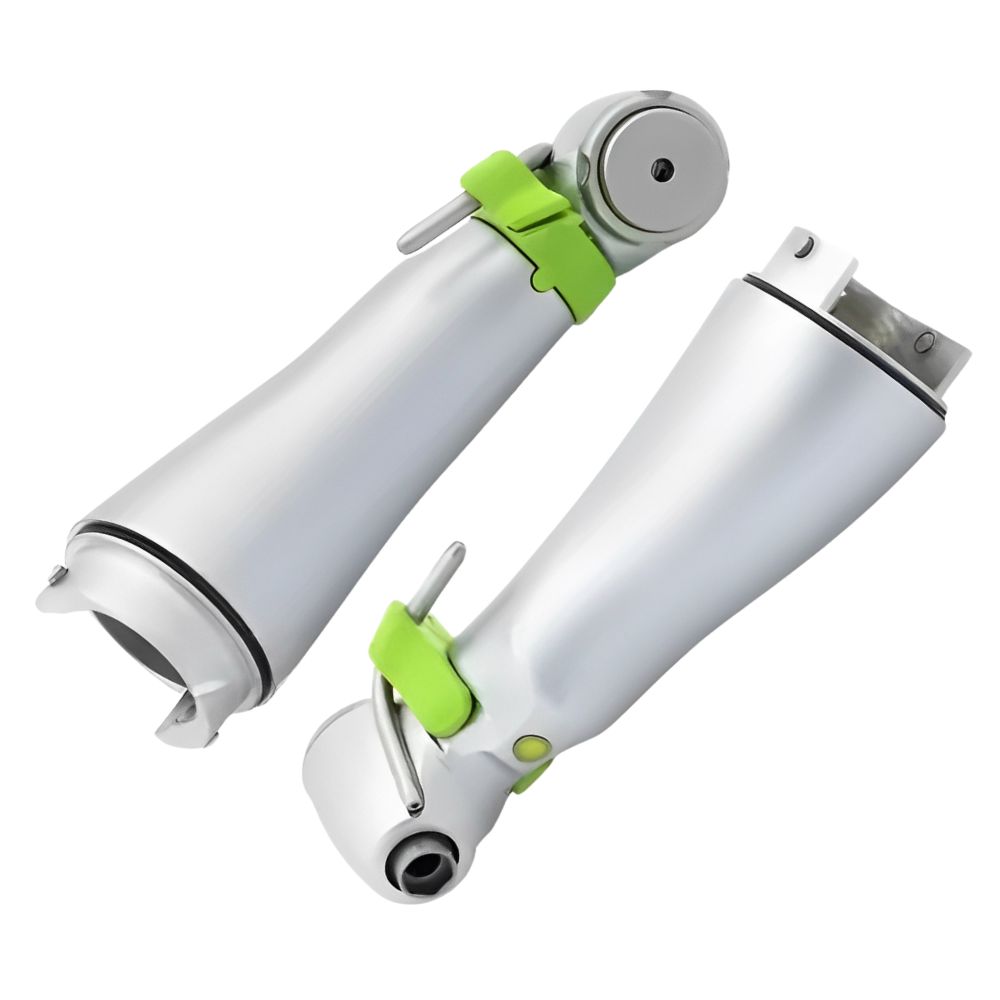Dental Micromotor Parts

Dental micromotors represent the critical heart of professional dental equipment, serving as precision-engineered electromechanical systems that power essential clinical procedures. Understanding the intricate components that comprise these sophisticated devices is fundamental to maintaining optimal performance, reliability, and clinical efficiency.
This small and relaible tools give life to Contra Angle and Stright Handpieces via generated rotations. In comparison with Airdriven dental turbines Electric Micromotors have highe torque and control of rotations.
Micromotor Classification
Brushed Micromotor vs. Brushless Micromotor: Key Differences, Pros, and Cons
Brushed and brushless electric micromotors are used in daily applications like dental tools, medical devices, robotics, and precision equipment. The choice between them often depends on the specific use case, performance requirements, and budget. Here’s a breakdown:
1. Brushed Electric Micromotors
How They Work:
- Brushed micromotors use physical brushes and a commutator to transfer electrical current to the rotor.
- The brushes create a mechanical connection that allows the motor to spin.
Pros:
- Simple Design: Brushed motors are mechanically simpler and easier to manufacture, making them cost-effective.
- Low Initial Cost: Their lower manufacturing complexity translates to affordability.
- Ease of Control: They do not require complex electronic controllers, making them easier to operate and integrate.
- High Torque at Low Speed: They excel in applications needing steady torque at lower speeds.
Cons:
- Wear and Tear: The brushes and commutator wear down over time, requiring regular maintenance and replacement.
- Limited Lifespan: Continuous friction between brushes and the commutator reduces durability.
- Lower Efficiency: Energy is lost as heat due to friction and resistance in the brushes.
- Noise: The mechanical contact between brushes and the commutator generates noise during operation.
2. Brushless Electric Micromotors
How They Work:
- Brushless motors replace brushes with electronic controllers and sensors to deliver current to the motor windings.
- The absence of brushes eliminates direct physical contact in the commutation process.
Pros:
- Longer Lifespan: Without brushes, these motors experience less wear and can operate for thousands of hours without maintenance.
- Higher Efficiency: Reduced friction and advanced control electronics result in better energy efficiency.
- Quieter Operation: The lack of mechanical contact minimizes operational noise.
- More Power: They provide higher torque and speed due to better power conversion and design optimization.
- Precision Control: Electronic commutation allows for greater accuracy in speed and torque management.
- Compact Design: High efficiency and better thermal management enable smaller and lighter designs.
Cons:
- Higher Initial Cost: Brushless motors are more expensive due to their sophisticated design and electronic components.
- Complex Control: They require electronic controllers, increasing setup complexity and cost.
- Dependence on Electronics: Performance is reliant on the reliability of the control system, which may require specialized expertise.
Comparison Table
| Feature | Brushed Micromotors | Brushless Micromotors |
|---|---|---|
| Cost | Lower initial cost | Higher initial cost |
| Lifespan | Shorter (brush wear) | Longer (no wear components) |
| Maintenance | Frequent (brushes) | Minimal or none |
| Efficiency | Moderate | High |
| Noise | Louder | Quieter |
| Control Complexity | Simple | Requires electronic control |
| Torque at Low Speed | High | Moderate |
| Durability | Moderate | High |
Which to Choose?
- Brushed Micromotors: Ideal for cost-sensitive applications or when the operating time is limited. Common in simple devices like toys or basic tools.
- Brushless Micromotors: Best for precision applications, long-term use, or scenarios requiring high efficiency and quiet operation. Common in medical equipment, drones, and robotics.
Understanding the specific requirements of your application (budget, lifespan, performance) will guide the decision between brushed and brushless micromotors.
Critical Components of Dental Micrommotors
Key Micromotor Components
1. Bearings
- Purpose: Reduce friction and ensure smooth shaft rotation.
- Common Issues: Worn bearings lead to noise, inefficiency, and overheating.
- Replacement Options: Use precision-engineered bearings from trusted manufacturers like SKF or NSK for optimal performance.
2. Gears
- Function: Transmit power and motion efficiently.
- Materials: Commonly crafted from metal, plastic, or ceramics.
- Maintenance: Replace worn gears promptly to avoid performance degradation.
3. Carbon Brushes
- Role: Conduct electrical current to the rotor.
- Wear: Brushes degrade over time, reducing motor efficiency.
- Replacement: High-quality brushes are essential to restore conductivity and performance.
4. Coils
- Purpose: Generate magnetic fields to drive rotor motion.
- Issues: Damaged or burned-out coils impair motor functionality.
- Solution: Replace with coils designed to meet original specifications.
5. Complete Rotors with Bearings
- Usage: Preassembled rotors simplify maintenance and ensure alignment.
- Recommendation: Opt for high-grade assemblies for seamless operation.
Specialized Micromotor Accessories
Chucks
- Function: Securely hold rotary tools like burs, grinding wheels, and sanding discs.
- Types:
- Collet Chucks: Use cylindrical sleeves for a precise grip.
- Keyless Chucks: Allow tool changes without additional tools.
- Pin Chucks: Ideal for smaller tools requiring delicate handling.
- Selection: Ensure compatibility with tool shank size and motor shaft.
Maintenance and Compatibility Considerations
- Part Quality: Always opt for components that match or exceed the manufacturer’s standards.
- Compatibility: Check motor specifications to avoid mismatched parts.
- Regular Maintenance: Clean, lubricate, and inspect micromotors regularly to prevent wear
Parts for Brands
- KaVo
- NSK
- W&H
- Bien Air
- Sirona
- Midwest
- Marathon
- Saeshin
FAQs on Micromotor Components
Rotor, stator, bearings, brushes (for brushed models), or electronic controllers (for brushless models).
Bien Air, KaVo, NSK, W&H, and Marathon are leaders in the field.
Replace when performance decreases or unusual noise occurs. High-quality bearings extend intervals between replacements.
While possible, use brand-recommended parts to ensure compatibility and performance but non original parts are also advisable for cost savings but need to buy from reliable suppliers.









